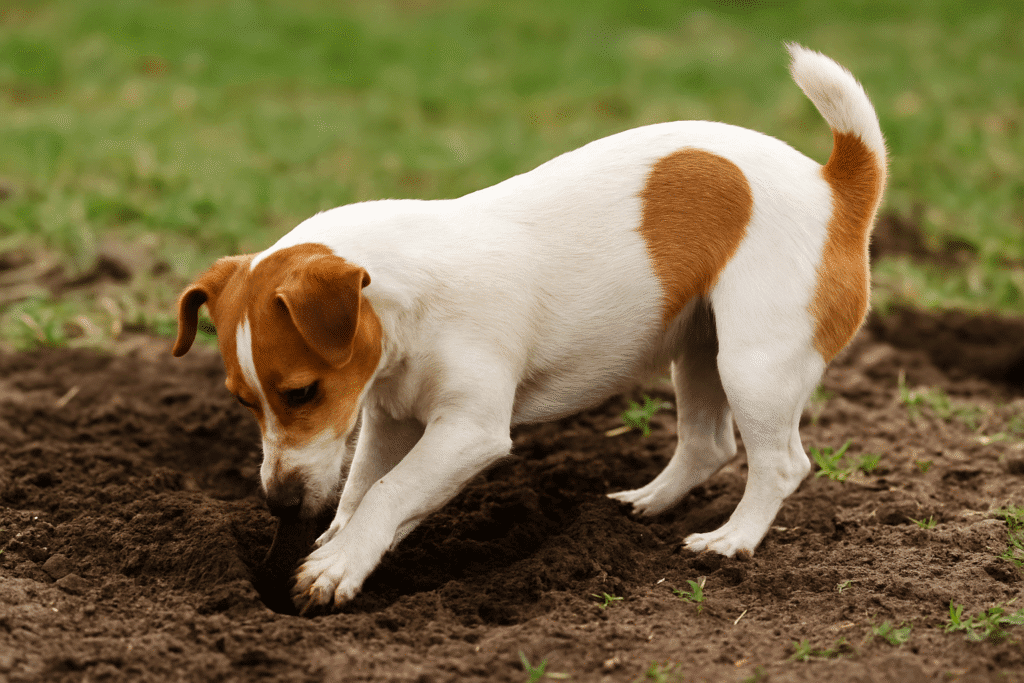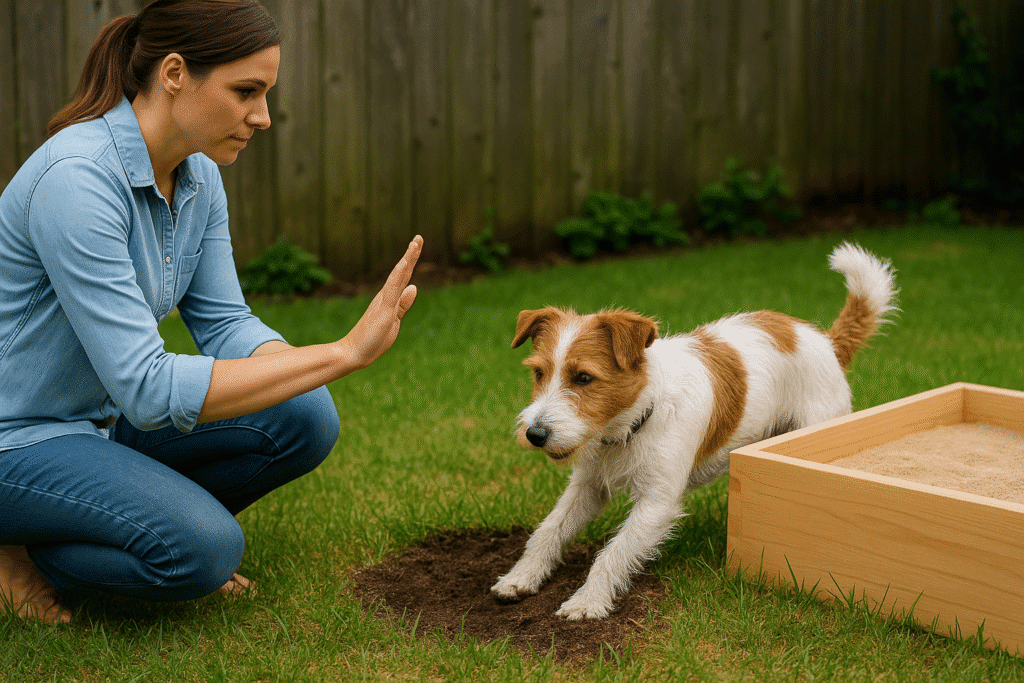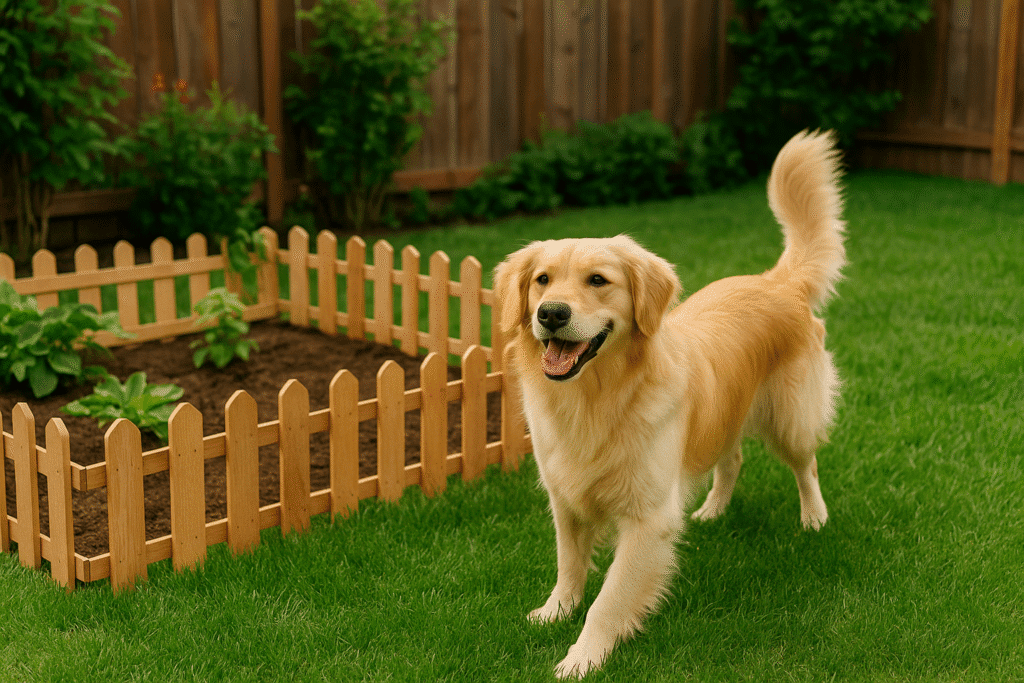Struggling with holes in your yard? This complete guide on how to stop dog digging explains the root causes of digging behavior, practical training techniques, and prevention tips. Backed by expert advice, you’ll learn how to redirect your dog’s energy and maintain a safe, happy environment.
Why Understanding Dog Digging Matters
If you’re frustrated with dirt piles and destroyed flower beds, you’re not alone. Learning how to stop dog digging starts with understanding the reasons behind it. Dogs dig for instinctive, emotional, or environmental reasons. Addressing the cause—not just the behavior—ensures long-term success.

Common Reasons Dogs Dig
1. Instinctual Behavior
Some breeds, especially terriers, huskies, and dachshunds, are natural diggers due to their hunting or burrowing history. Digging is hardwired into their instincts.
2. Boredom and Excess Energy
A lack of exercise or mental stimulation often leads to destructive behaviors like digging. Dogs need physical outlets for their boundless energy.
3. Comfort Seeking
On hot days, dogs may dig into the cool soil to regulate their body temperature. Conversely, in colder climates, they may dig to create a cozy den.
4. Anxiety or Stress
Separation anxiety or stress triggers can push dogs to dig as a coping mechanism. The act itself provides them with temporary relief.
5. Attention-Seeking
If dogs realize digging gets them attention—even negative—they may repeat the behavior to engage with you.

How to Stop Dog Digging with Training Techniques
1. Increase Physical Activity
A tired dog is a happy dog. Daily walks, runs, and play sessions can significantly reduce digging triggered by boredom or excess energy.
2. Provide Mental Enrichment
Use puzzle toys, scent games, or obedience training to challenge your dog’s brain. Mental fatigue is as important as physical exercise.
3. Redirect the Digging Instinct
Create a designated digging zone such as a sandbox. Bury toys or treats there, rewarding your dog for digging in the “allowed” spot.
4. Teach “Leave It” and “No Dig” Commands
Consistency in training is key. Pair verbal cues with positive reinforcement—praise and treats—when your dog obeys.
Prevention Tips to Stop Dog Digging in the Yard
1. Secure and Reinforce the Yard
Use rocks, chicken wire, or landscaping fabric in commonly dug areas. Limit access to garden beds by using fencing or raised planters.
2. Address Environmental Triggers
Eliminate rodents or pests that may attract digging. Also, ensure your yard offers shade, water, and comfortable resting spots.
3. Supervise and Interact
Spending more time outdoors with your dog decreases their likelihood of seeking self-entertainment through digging.
When to Seek Professional Help
If you’ve tried multiple strategies and your dog continues excessive digging, consulting a professional trainer or veterinarian may be necessary. Persistent digging can signal deeper behavioral or health concerns.
Effective Tools to Help Stop Dog Digging
- Deterrent Sprays – Pet-safe sprays discourage digging in restricted areas.
- Interactive Toys – Keeps your dog engaged and less likely to dig.
- Outdoor Structures – Shade, cooling pads, or elevated beds provide comfort without digging.

FAQs: How to Stop Dog Digging
1. Is digging normal for dogs?
Yes, digging is instinctive. The goal is not to eliminate the behavior but to redirect it appropriately.
2. Will punishment work to stop dog digging?
No. Punishment increases stress and often worsens the problem. Positive reinforcement is always more effective.
3. How long does training take?
With consistency, many dogs reduce digging within 2–4 weeks. However, instinct-driven breeds may require ongoing management.
4. Can neutering reduce digging?
While neutering may reduce roaming behaviors, it is not a direct fix for digging habits.
5. Do certain breeds dig more than others?
Yes, terriers, huskies, and dachshunds are notorious for digging due to their genetics and instincts.
Final Thoughts on How to Stop Dog Digging
Mastering how to stop dog digging takes time, patience, and an understanding of your dog’s unique needs. Combining training, prevention strategies, and enrichment ensures a more peaceful home and yard.
Internal link: Learn more about tackling problem behaviors in our guide on How to Stop Dog Barking.
Internal link: For calming techniques, explore Separation Anxiety in Dogs.
(Outbound link: Behavior tips from Humane Society: How to get your dog to stop digging.)
CTA
Want more expert dog training resources? See all training tips here.

